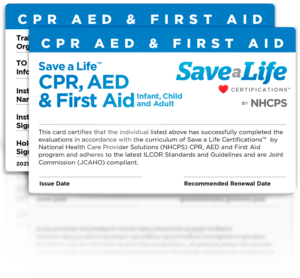Your cart is currently empty!
Traditional vs. Compression-Only CPR: Which Is Better?
Cardiopulmonary resuscitation (CPR) is simpler and more effective than ever before outside of the hospital with Hands-Only CPR, which is also known as compression-only CPR. Traditional CPR is a somewhat complex practice, but it can be better understood when broken down into 3 steps:
1. Call- After checking the victim for responsiveness, call 9-1-1. After the call, it is imperative to immediately return to the victim.
 2. Pump- After returning to the unresponsive victim begin chest compressions. Push down 2 inches into the center of the chest 30 times. At this step, it is crucial to pump hard and fast or the compressions could essentially be inadequate.
2. Pump- After returning to the unresponsive victim begin chest compressions. Push down 2 inches into the center of the chest 30 times. At this step, it is crucial to pump hard and fast or the compressions could essentially be inadequate.
3. Blow – Use the head-tilt/chin-lift maneuver and pinch the nose while covering the mouth. Blow into the mouth until you see the chest rise and give two breaths.
While these steps seem relatively straightforward, performing breaths can interrupt the compressions, lessening their value. In addition, the performance of traditional CPR outside of the hospital is often difficult. In an effort to improve the return of spontaneous circulation (ROSC) outside of the hospital, the International Liaison Committee on Resuscitation (ILCOR) recently initiated Hands-Only CPR, which rids CPR of breaths and focuses solely on chest compressions. Compression-Only CPR is broken down into 2 steps, rather than 3:
1. Call 9-1-1
2. Push hard and fast at the center of the chest to the beat of the song “Stayin’ Alive”
It is clear that compression-only CPR is somewhat simpler, but is it as effective?
In a recent study published by sciencedirect.com, researchers examined past studies to determine the effectiveness of compression-only CPR compared to traditional CPR as measured by the rate of survival (defined as leaving the hospital). The analysis found compression-only CPR results were similar to standard CPR!
Putting it into perspective
CPR is an intricate and somewhat complicated practice, but with the proper knowledge and training, it doesn’t have to be. Typically, those without CPR certification feel as though they do not have the skills or knowledge to save a life with CPR. This statement, however, is completely false. Anyone can learn CPR, and the knowledge you learn from taking a short course online or in the classroom can save a loved one’s life. Immediate CPR can double, or even triple the likelihood of patient survival. This simple way to better yourself and your community. Everyone should consider getting certified in CPR.







Leave a Reply